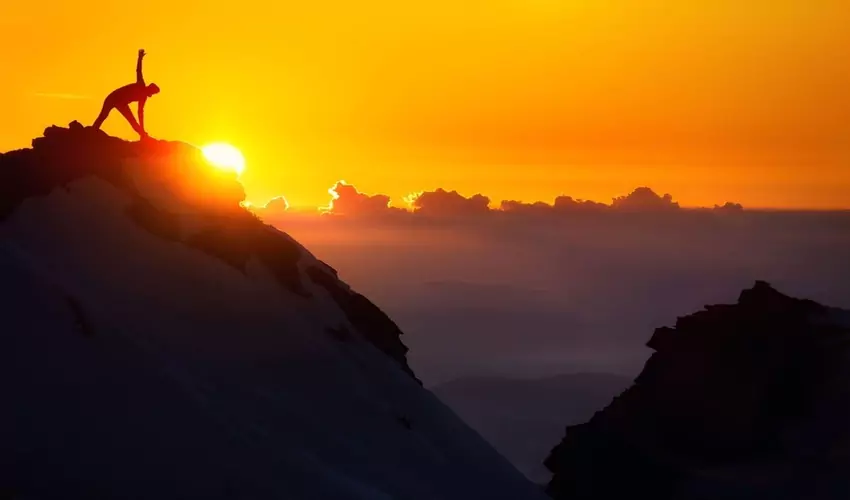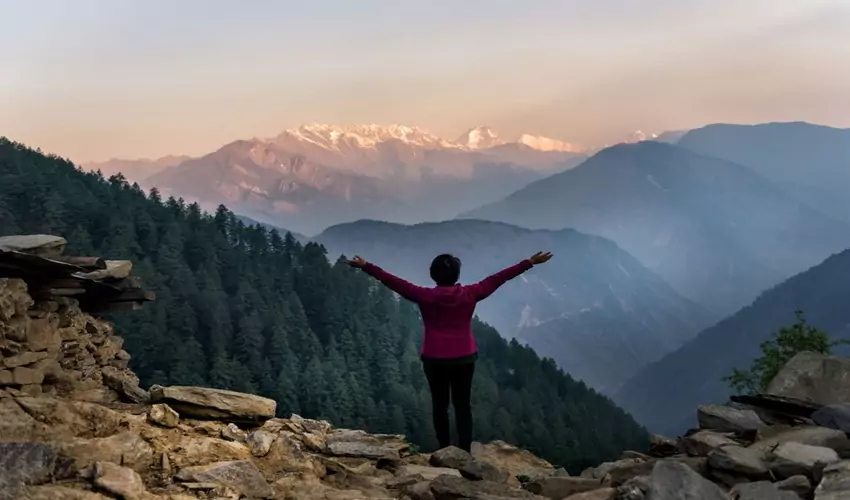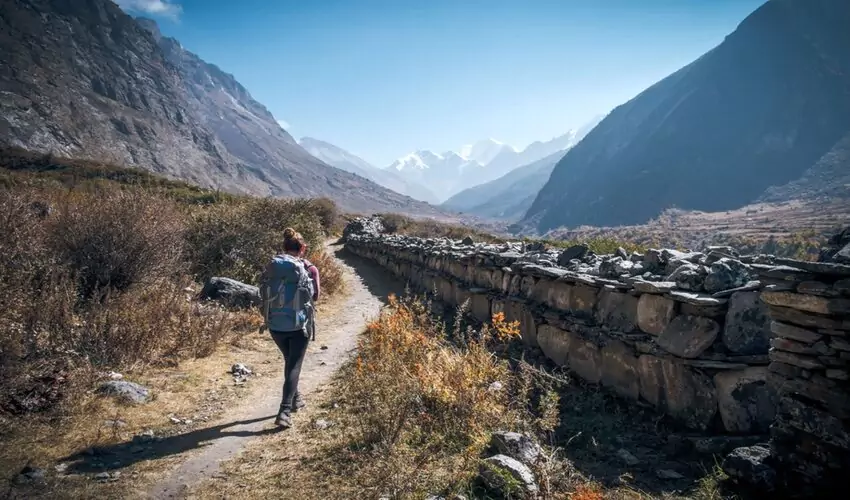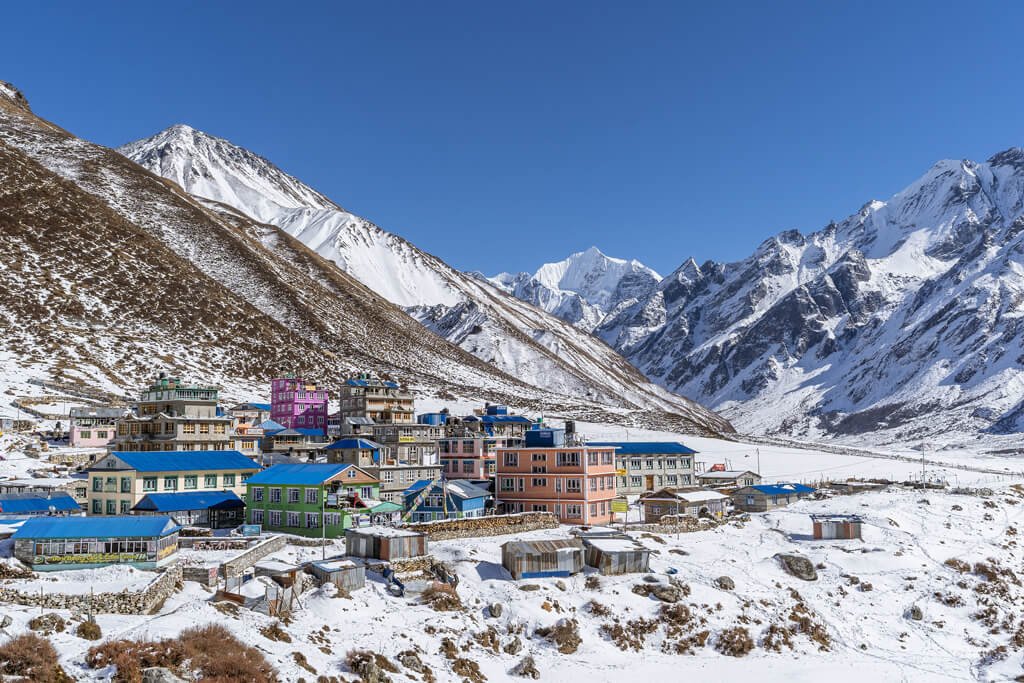If you have a short time in hand but want to get to the lap of the Himalayas within a short period, then the Langtang Valley trek is for you. Located just 68 KM north of Kathmandu, the 11-day Langtang Valley trek is a short trek that takes you through beautiful cultural valleys, varied terrains, and into the lap of the Himalayas.
The Langtang region undergoes different weather and temperature conditions depending on the season. So, when is the best time to trek to Langtang Valley?
Nepal experiences four different seasons in a year, namely Autumn, Spring, Winter, and Summer/Monsoon. And among these seasons, Autumn and Spring are considered the best time for Langtang Trekking.
The weather and temperature condition during these seasons is stable and constant. Thus, autumn and spring offer you the best trekking experience. You will have an easy and comfortable walk on a sunny day with a warm temperature and dry trail. But the temperature during days and nights is quite cold, and it is still bearable.
Along with that, the vegetation is at whole blossoms. You will walk through lush oak and rhododendron forests and diverse vegetation during this season. The views of the mountains under the clear blue skies are alluring during the trek in autumn and spring.
However Langtang Valley trek is doable throughout the year, but trekking during the off-season (winter and monsoon) requires extra preparation, and you may face unexpected challenges of nature.
Best Time to Trek to Langtang Valley
As mentioned earlier, the Langtang region encounters four seasons- Spring, Autumn, Summer, and Winter offers different weather and temperature conditions.
If you choose between these seasons, the spring and autumn months are the best time to trek to Langtang Valley as they offer warm temperatures and stable weather with breathtaking scenery.
However, trekking during the off-season may bring some difficulties during the trek. But with proper preparation and appropriate trekking gear, this trek is doable at any time of the year.
As you may know, each season has its perks and offers different experiences; here is the detail regarding each season in Langtang Valley to help you plan the trek better.
Related Trips:
1. Langtang Trek During the Autumn Season – Best Time

The Autumn season is the most popular and best time to trek to Langtang Valley. September, October, and November are the autumn months in Nepal. During this time, you will experience warm and stable weather conditions. The days are bright and sunny with clear blue skies offering you the best views of the mountain.
As you are in the mountains, it is evident that the mornings and nights are colder, but the temperature during the days ranges from 10 °C-15 ° C (50 °F-59 ° F). Thus, you will have a great experience with the best weather and temperature conditions.
In addition to that, there is a meager chance of rainfall during autumn, thus giving you excellent visibility of the mountains and surrounding mountains.
Since it is the best time to trek in the Langtang region, the trails are crowded with travelers worldwide. Thus, pre-booking for accommodation and food is recommended.
Also, see:
2. Langtang Trek During the Spring Season

Spring is the second-best time to go trekking in the Langtang region. March, April, and May are the spring months. During spring, the days are long and warm. The average temperature during the day ranges from 10 °C to 20 °C (50 °F-68 ° F). Thus, you will have an easy and warm walk in the bright skies.
Spring is also known as the season of color. In spring, the hills and forests look brightly colorful with the fresh blossoms of rhododendrons and other wildflowers. The warm weather and excellent breeze air help to make your journey less exhausting.
The lifetime experience that takes you through the colorful forest with clear blue skies and unobstructed views of the mountains without worries of rain or snow is what the Langtang spring trek offers.
3. Langtang Trek During the Summer Season

The Langtang locale experiences the blistering summer months in June, July, and August. The rainstorm starts in the late spring season, alongside the sun. During the day, the temperature in the lower districts will remain at 30° C (86° F) on radiant days. Be that as it may, as you move higher, the temperature starts to drop by around 12° C (52.36 ° F) in July.
The precipitation can cause parasites, bugs, and nightcrawlers to slip the path.
Yet, on the lighter side, you will have the option to appreciate the downpour-washed condition with greenery. Summer is such a mysterious time for nature sweethearts in the Langtang Valley.
Once in a while, the view might be hindered by thick haze. Be that as it may, the season offers the most apparent perspectives on the mountain and the encompassing scenes after the precipitation. Likewise, as this is the planting period in parts of the Langtang zone, you will have an excellent time gander at the conventional terraced ranches and the local working people.
Also, see:
4. Langtang Trek During the Winter Season

Winter season falls from December to February in the Langtang region. The Langtang region is coldest during the winter season. The temperature can range from 6°C to 10°C (43.8 ° F50. ° F) during the day. The temperature drops below the freezing temperature at night.
The skies are pretty clear during the winter, and you can experience the snow-blanked Langtang Valley.
Since winter is an off-season for Langtang trekking, you won’t find a massive crowd as you see in peak seasons. Thus, trekking in winter is the best time for those who want to explore nature in solitude.
Also, see:
Conclusion
Have you decided when the best time to trek to Langtang Valley is? We have made our recommendations, and it is for you to pick. Please feel free to contact Peregrine Treks for any queries or to help you plan your visit to Nepal.
